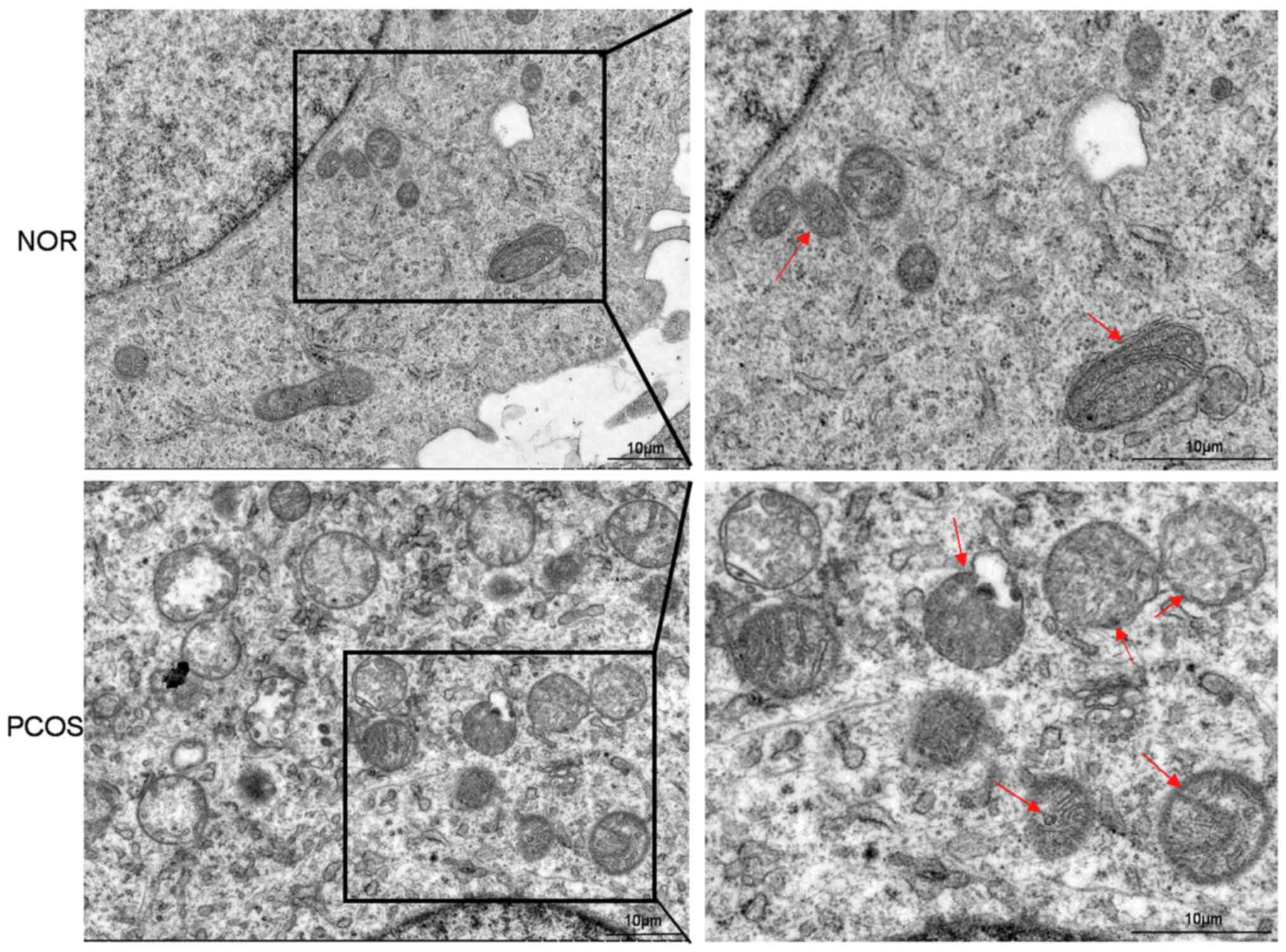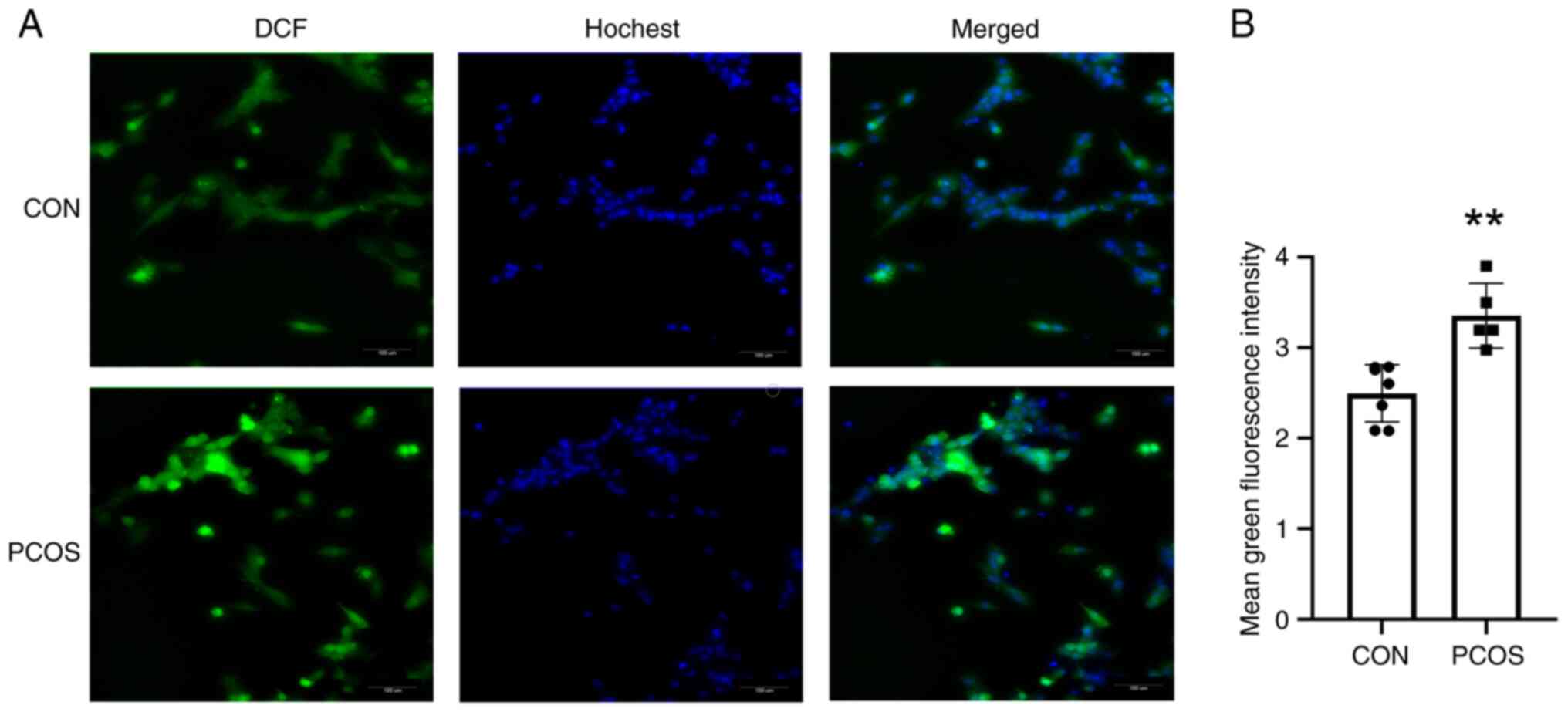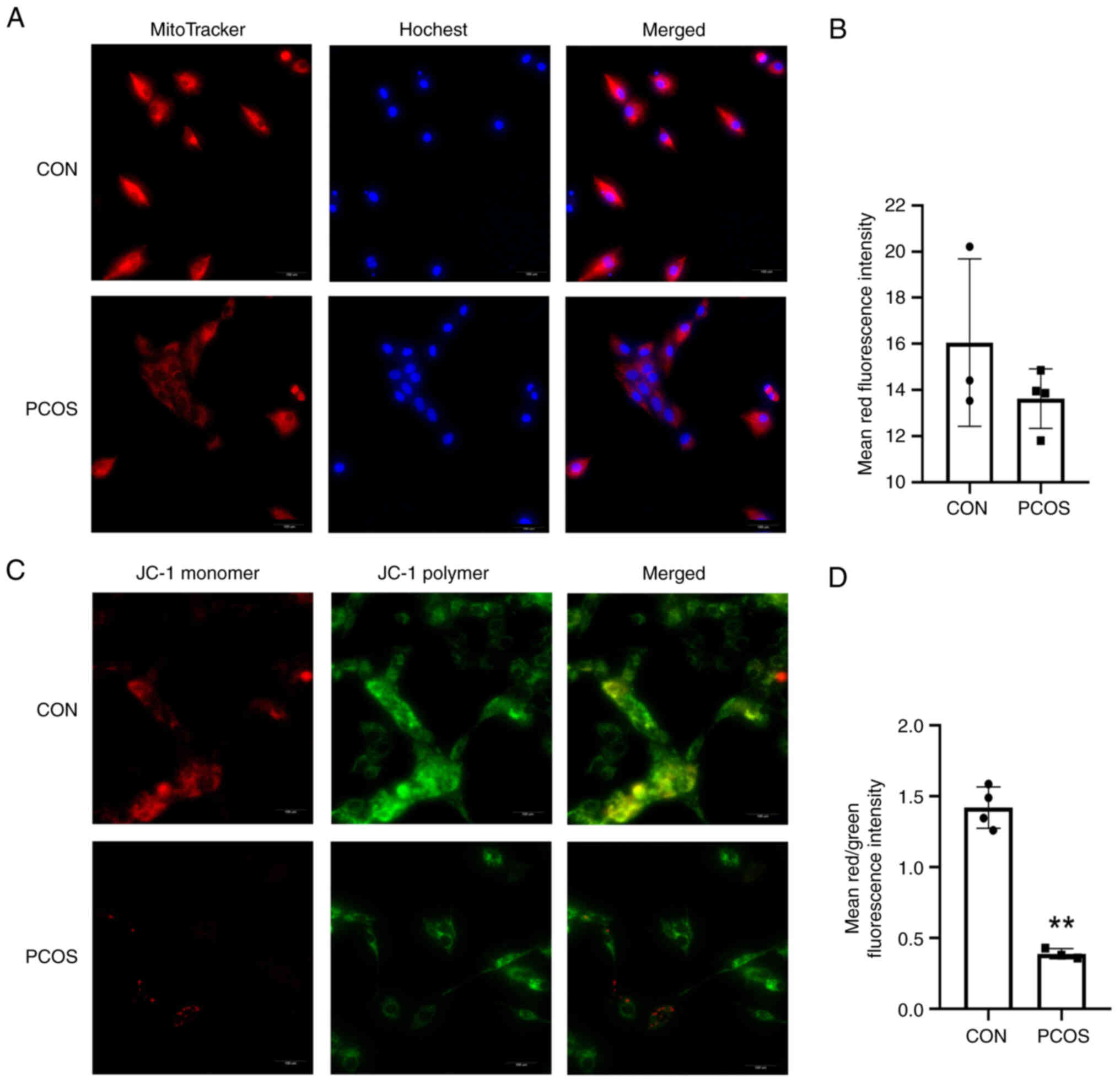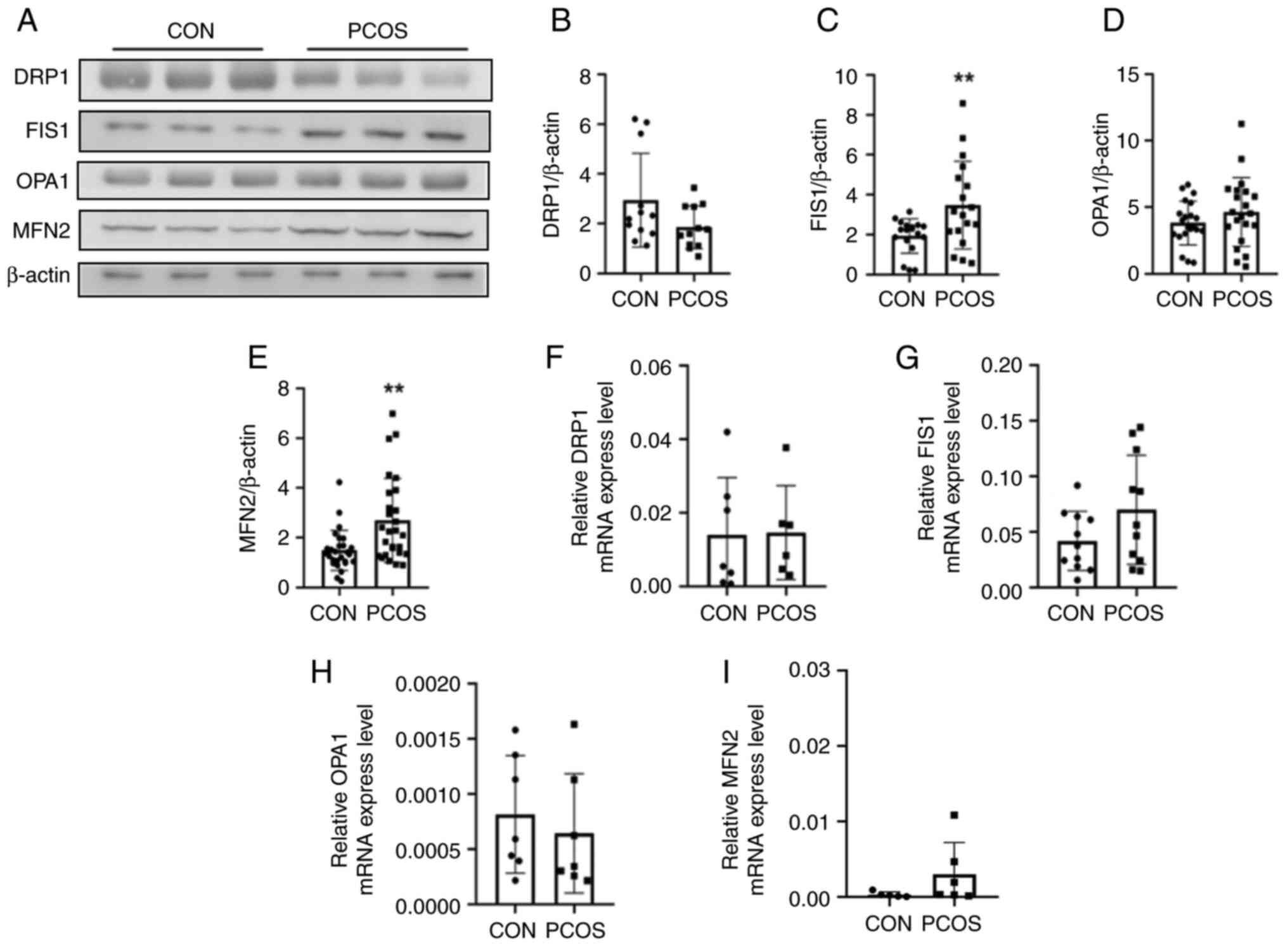|
1
|
Aversa A, La Vignera S, Rago R, Gambineri
A, Nappi RE, Calogero AE and Ferlin A: Fundamental concepts and
novel aspects of polycystic ovarian syndrome: Expert consensus
resolutions. Front Endocrinol (Lausanne). 11:5162020. View Article : Google Scholar : PubMed/NCBI
|
|
2
|
Gleicher N, Darmon S, Patrizio P and Barad
DH: Reconsidering the polycystic ovary syndrome (PCOS).
Biomedicines. 10:15052022. View Article : Google Scholar : PubMed/NCBI
|
|
3
|
Liu X, Wang L, Zuo X, Li C and Teng Y:
Women with PCOS with a history of early pregnancy loss show a
higher risk of gestational diabetes mellitus. Int J Gen Med.
14:6409–6416. 2021. View Article : Google Scholar : PubMed/NCBI
|
|
4
|
Sayutti N, Abu MA and Ahmad MF: PCOS and
role of cumulus gene expression in assessing oocytes quality. Front
Endocrinol (Lausanne). 13:8438672022. View Article : Google Scholar : PubMed/NCBI
|
|
5
|
Richani D, Dunning KR, Thompson JG and
Gilchrist RB: Metabolic co-dependence of the oocyte and cumulus
cells: essential role in determining oocyte developmental
competence. Hum Reprod Update. 27:27–47. 2021. View Article : Google Scholar : PubMed/NCBI
|
|
6
|
Kirillova A, Smitz JEJ, Sukhikh GT and
Mazunin I: The role of mitochondria in oocyte maturation. Cells.
10:24842021. View Article : Google Scholar : PubMed/NCBI
|
|
7
|
Li W, Cao J, Wang X, Zhang Y, Sun Q, Jiang
Y, Yao J, Li C, Wang Y and Wang W: Ferruginol restores
SIRT1-PGC-1α-mediated mitochondrial biogenesis and fatty acid
oxidation for the treatment of DOX-induced cardiotoxicity. Front
Pharmacol. 12:7738342021. View Article : Google Scholar : PubMed/NCBI
|
|
8
|
Tian F, Li Q, Shi L, Li J, Shi M, Zhu Y,
Li H and Ge RS: In utero bisphenol AF exposure causes fetal Leydig
cell dysfunction and induces multinucleated gonocytes by generating
oxidative stress and reducing the SIRT1/PGC1α signals. Toxicol Appl
Pharmacol. 447:1160692022. View Article : Google Scholar : PubMed/NCBI
|
|
9
|
Zhao Y, Zhang J, Zheng Y, Zhang Y, Zhang
XJ, Wang H, Du Y, Guan J, Wang X and Fu J: NAD+ improves
cognitive function and reduces neuroinflammation by ameliorating
mitochondrial damage and decreasing ROS production in chronic
cerebral hypoperfusion models through Sirt1/PGC-1α pathway. J
Neuroinflammation. 18:2072021. View Article : Google Scholar : PubMed/NCBI
|
|
10
|
Tian L, Cao W, Yue R, Yuan Y, Guo X, Qin
D, Xing J and Wang X: Pretreatment with Tilianin improves
mitochondrial energy metabolism and oxidative stress in rats with
myocardial ischemia/reperfusion injury via AMPK/SIRT1/PGC-1 alpha
signaling pathway. J Pharmacol Sci. 139:352–360. 2019. View Article : Google Scholar : PubMed/NCBI
|
|
11
|
Chandrasekaran K, Anjaneyulu M, Choi J,
Kumar P, Salimian M, Ho CY and Russell JW: Role of mitochondria in
diabetic peripheral neuropathy: Influencing the
NAD+-dependent SIRT1-PGC-1α-TFAM pathway. Int Rev
Neurobiol. 145:177–209. 2019. View Article : Google Scholar : PubMed/NCBI
|
|
12
|
Kalliora C, Kyriazis ID, Oka SI, Lieu MJ,
Yue Y, Area-Gomez E, Pol CJ, Tian Y, Mizushima W, Chin A, et al:
Dual peroxisome-proliferator-activated-receptor-α/γ activation
inhibits SIRT1-PGC1α axis and causes cardiac dysfunction. JCI
Insight. 5:e1295562019. View Article : Google Scholar : PubMed/NCBI
|
|
13
|
Emidio GD, Placidi M, Rea F, Rossi G,
Falone S, Cristiano L, Nottola S, D'Alessandro AM, Amicarelli F,
Palmerini MG and Tatone C: Methylglyoxal-dependent glycative stress
and deregulation of SIRT1 functional network in the ovary of PCOS
mice. Cells. 9:2092020. View Article : Google Scholar : PubMed/NCBI
|
|
14
|
Livak KJ and Schmittgen TD: Analysis of
relative gene expression data using real-time quantitative PCR and
the 2(−Delta Delta C(T)) method. Methods. 25:402–408. 2001.
View Article : Google Scholar : PubMed/NCBI
|
|
15
|
He Y, Lu Y, Zhu Q, Wang Y, Lindheim SR, Qi
J, Li X, Ding Y, Shi Y, Wei D, et al: Influence of metabolic
syndrome on female fertility and in vitro fertilization outcomes in
PCOS women. Am J Obstet Gynecol. 221:138.e1–138.e12. 2019.
View Article : Google Scholar : PubMed/NCBI
|
|
16
|
Gong Y, Luo S, Fan P, Zhu H, Li Y and
Huang W: Growth hormone activates PI3K/Akt signaling and inhibits
ROS accumulation and apoptosis in granulosa cells of patients with
polycystic ovary syndrome. Reprod Biol Endocrinol. 18:1212020.
View Article : Google Scholar : PubMed/NCBI
|
|
17
|
Guijarro LG, Sanmartin-Salinas P,
Pérez-Cuevas E, Toledo-Lobo MV, Monserrat J, Zoullas S, Sáez MA,
Álvarez-Mon MA, Bujan J, Noguerales-Fraguas F, et al: Actinomycin D
arrests cell cycle of hepatocellular carcinoma cell lines and
induces p53-dependent cell death: A study of the molecular
mechanism involved in the protective effect of IRS-4.
Pharmaceuticals (Basel). 14:8452021. View Article : Google Scholar : PubMed/NCBI
|
|
18
|
Patil K, Shinde G, Hinduja I and Mukherjee
S: Compromised cumulus-oocyte complex matrix organization and
expansion in women with PCOS. Reprod Sci. 29:836–848. 2022.
View Article : Google Scholar : PubMed/NCBI
|
|
19
|
Yefimova MG, Lefevre C, Bashamboo A,
Eozenou C, Burel A, Lavault MT, Meunier AC, Pimentel C, Veau S,
Neyroud AS, et al: Granulosa cells provide elimination of apoptotic
oocytes through unconventional autophagy-assisted phagocytosis. Hum
Reprod. 35:1346–1362. 2020. View Article : Google Scholar : PubMed/NCBI
|
|
20
|
Lai Q, Xiang W, Li Q, Zhang H, Li Y, Zhu
G, Xiong C and Jin L: Oxidative stress in granulosa cells
contributes to poor oocyte quality and IVF-ET outcomes in women
with polycystic ovary syndrome. Front Med. 12:518–524. 2018.
View Article : Google Scholar : PubMed/NCBI
|
|
21
|
Zhang Q, Ren J, Wang F, Pan M, Cui L, Li M
and Qu F: Mitochondrial and glucose metabolic dysfunctions in
granulosa cells induce impaired oocytes of polycystic ovary
syndrome through Sirtuin 3. Free Radic Biol Med. 187:1–16. 2022.
View Article : Google Scholar : PubMed/NCBI
|
|
22
|
Chiang JL, Shukla P, Pagidas K, Ahmed NS,
Karri S, Gunn DD, Hurd WW and Singh KK: Mitochondria in ovarian
aging and reproductive longevity. Ageing Res Rev. 63:1011682020.
View Article : Google Scholar : PubMed/NCBI
|
|
23
|
Guijarro LG, Cano-Martínez D, Toledo-Lobo
MV, Ruiz-Llorente L, Chaparro M, Guerra I, Iborra M, Cabriada JL,
Bujanda L, Taxonera C, et al: Evaluation of AIF-1 (allograft
inflammatory factor-1) as a biomarker of Crohn's disease severity.
Biomedicines. 10:7272022. View Article : Google Scholar : PubMed/NCBI
|
|
24
|
Adhikari D, Lee IW, Yuen WS and Carroll J:
Oocyte mitochondria-key regulators of oocyte function and potential
therapeutic targets for improving fertility. Biol Reprod.
106:366–377. 2022. View Article : Google Scholar : PubMed/NCBI
|
|
25
|
Zhao S, Heng N, Wang H, Wang H, Zhang H,
Gong J, Hu Z and Zhu H: Mitofusins: From mitochondria to fertility.
Cell Mol Life Sci. 79:3702022. View Article : Google Scholar : PubMed/NCBI
|
|
26
|
Liu Y, Han M, Li X, Wang H, Ma M, Zhang S,
Guo Y, Wang S, Wang Y, Duan N, et al: Age-related changes in the
mitochondria of human mural granulosa cells. Hum Reprod.
32:2465–2473. 2017. View Article : Google Scholar : PubMed/NCBI
|
|
27
|
Maremanda KP, Sundar IK and Rahman I: Role
of inner mitochondrial protein OPA1 in mitochondrial dysfunction by
tobacco smoking and in the pathogenesis of COPD. Redox Biol.
45:1020552021. View Article : Google Scholar : PubMed/NCBI
|
|
28
|
Chen L, Liu B, Qin Y, Li A, Gao M, Liu H
and Gong G: Mitochondrial fusion protein Mfn2 and its role in heart
failure. Front Mol Biosci. 8:6812372021. View Article : Google Scholar : PubMed/NCBI
|
|
29
|
Yapa NMB, Lisnyak V, Reljic B and Ryan MT:
Mitochondrial dynamics in health and disease. FEBS Lett.
595:1184–1204. 2021. View Article : Google Scholar : PubMed/NCBI
|
|
30
|
Kalia R, Wang RY, Yusuf A, Thomas PV,
Agard DA, Shaw JM and Frost A: Structural basis of mitochondrial
receptor binding and constriction by DRP1. Nature. 558:401–405.
2018. View Article : Google Scholar : PubMed/NCBI
|
|
31
|
Kim HK, Jeon J, Song IS, Heo HJ, Jeong SH,
Long LT, Thu VT, Ko TH, Kim M, Kim N, et al: Tetrahydrobiopterin
enhances mitochondrial biogenesis and cardiac contractility via
stimulation of PGC1α signaling. Biochim Biophys Acta Mol Basis Dis.
1865:1655242019. View Article : Google Scholar : PubMed/NCBI
|
|
32
|
Hao L, Zhong W, Dong H, Guo W, Sun X,
Zhang W, Yue R, Li T, Griffiths A, Ahmadi AR, et al: ATF4
activation promotes hepatic mitochondrial dysfunction by repressing
NRF1-TFAM signalling in alcoholic steatohepatitis. Gut.
70:1933–1945. 2021. View Article : Google Scholar : PubMed/NCBI
|
|
33
|
Sun L, Tian H, Xue S, Ye H, Xue X, Wang R,
Liu Y, Zhang C, Chen Q and Gao S: Circadian clock genes REV-ERBs
inhibits granulosa cells apoptosis by regulating mitochondrial
biogenesis and autophagy in polycystic ovary syndrome. Front Cell
Dev Biol. 9:6581122021. View Article : Google Scholar : PubMed/NCBI
|
|
34
|
Safaei Z, Bakhshalizadeh S, Nasr-Esfahani
MH, Akbari Sene A, Najafzadeh V, Soleimani M and Shirazi R: Vitamin
D3 affects mitochondrial biogenesis through mitogen-activated
protein kinase in polycystic ovary syndrome mouse model. J Cell
Physiol. 235:6113–6126. 2020. View Article : Google Scholar : PubMed/NCBI
|
|
35
|
Wang C, Liu T, Tong Y, Cui R, Qu K, Liu C
and Zhang J: Ulinastatin protects against acetaminophen-induced
liver injury by alleviating ferroptosis via the SIRT1/NRF2/HO-1
pathway. Am J Transl Res. 13:6031–6042. 2021.PubMed/NCBI
|
|
36
|
Jalgaonkar MP, Parmar UM, Kulkarni YA and
Oza MJ: SIRT1-FOXOs activity regulates diabetic complications.
Pharmacol Res. 175:1060142022. View Article : Google Scholar : PubMed/NCBI
|
|
37
|
Guo A, Li K and Xiao Q: Fibroblast growth
factor 19 alleviates palmitic acid-induced mitochondrial
dysfunction and oxidative stress via the AMPK/PGC-1α pathway in
skeletal muscle. Biochem Biophys Res Commun. 526:1069–1076. 2020.
View Article : Google Scholar : PubMed/NCBI
|
|
38
|
Ortega MA, De Leon-Oliva D, Garcia-Montero
C, Fraile-Martinez O, Boaru DL, Del Val Toledo Lobo M, García-Tuñón
I, Royuela M, García-Honduvilla N, Bujan J, et al: Understanding
HAT1: A comprehensive review of noncanonical roles and connection
with disease. Genes (Basel). 14:9152023. View Article : Google Scholar : PubMed/NCBI
|
|
39
|
Wang ZH, Bao XG, Hu JJ, Shen SB, Xu GH and
Wu YL: Nicotinamide riboside enhances endothelial precursor cell
function to promote refractory wound healing through mediating the
Sirt1/AMPK pathway. Front Pharmacol. 12:6715632021. View Article : Google Scholar : PubMed/NCBI
|




















